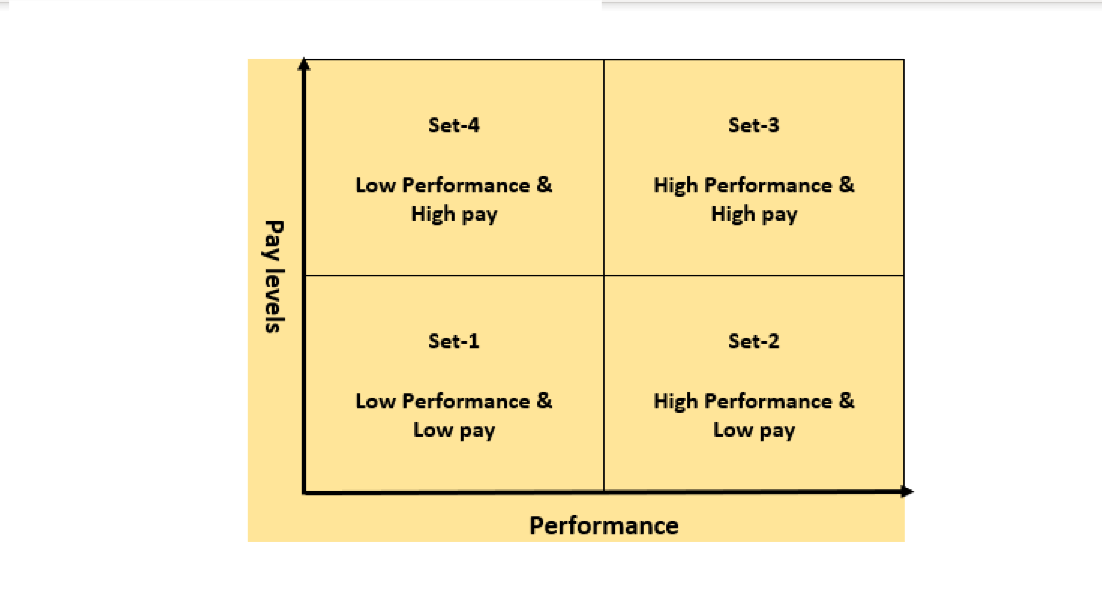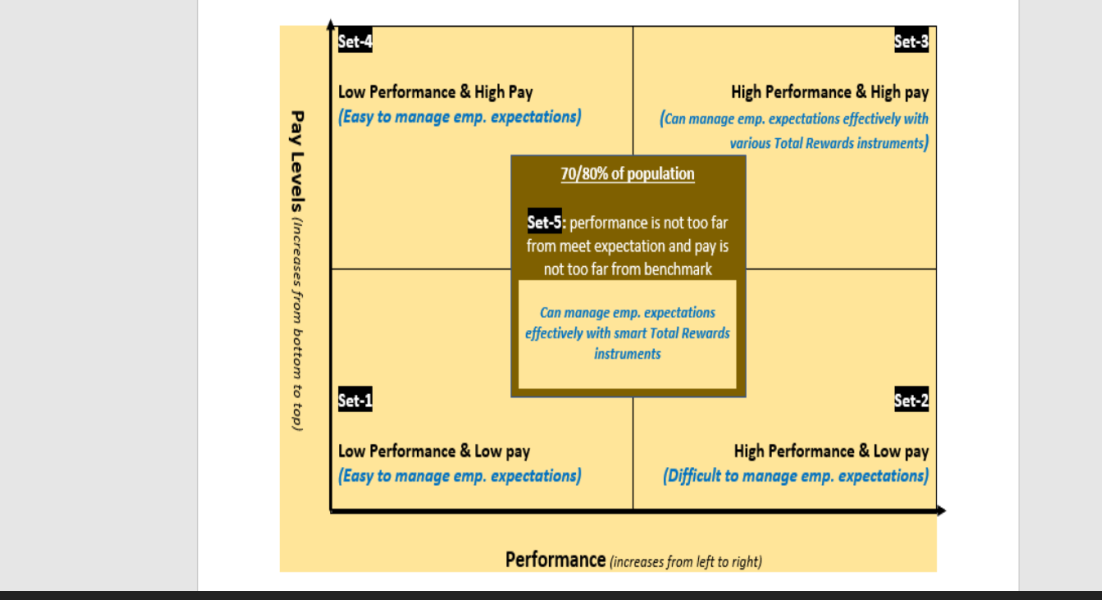Is transparency in pay a boon or disaster?

Business professionals, senior leaders or HR professionals must have faced the following situations at one point or another:
- Limited budget to cater to underpaid employees, top or critical talent
- Most employees claim that their performance is reasonably well but are underpaid
- Top talent despite being at a higher pay level, would expect disproportionate rewards
- New hires are coming at very high pay and create parity issues
- Exceptional increases impact budget and parity but there is no other alternative for retention and business continuity
- Unfair performance evaluation and increment and the list can go on and on ….
Let’s proceed further and see if all these challenges have anything to do with pay transparency and if it could be achieved without detrimental effects.
Let’s first define the levels of pay transparency for our discussion over here.
Basic Level – Having the rewards philosophy in place. Overall rewards philosophy, very basic comp increase, promotions, lateral movements etc. guidelines are communicated to employees.
Moderate Level – Having detailed rewards philosophy in place and detailed comp increase, promotions, lateral movements hiring etc. guidelines are recorded and put up in the SOPs or any other document/portal for employees’ consumptions.
Advance Level – In addition to the moderate level, at this level pay levels of an individual is also known and explained to individuals and their managers. Pay level could be shared in terms of pay position in the range like quartiles(lower, middle, upper quartile positions against the benchmark), compa-ratios (ratio of individuals pay against the benchmark pay), etc. The benchmark pay is the organization’s defined pay line (could be internal, external, mixed).
Super Advance (Extreme) Level – Where the benchmark data for all positions and current pay level for all employees are available for all in the organization.
For this article, I am assuming that,
- The basic and moderate level is already achieved. My focus of discussion would be restricted to Advance level of pay transparency at this stage
- Performance is fairly evaluated, and employees are fine with their respective ratings
- Employees and managers are oriented on organizations pay philosophy and they understand it
As we all know that fairness and transparency are very critical for employees and organizations. Lack of it brings a lot of dissatisfaction among the employees and managers have a tough time managing employees’ expectations and provide a conducive environment to perform and deliver. One segment of reward professionals or business leaders is of the view that their managers or employees are not at that level of maturity stage where they can handle pay level transparency. If data is made available to them it would be a disaster, create chaos and would make it more difficult to manage employees’ exceptions and retain critical or top talent.
Is it just a myth? Or pay transparency can bring the desired result and be one of the most effective Total Regards instrument to offer to employees. Let’s consider two scenarios:
Scenario 1: Achieved basic or moderate level of transparency but not the advance level of transparency as defined above Employees can be divided in the below four sets/quadrants.

In the above scenario, there would be employees who would feel that:
- My pay is lower then others in the function and market (of course irrespective of their actual pay positions). Manger cannot logically respond to their concerns (as both managers and employees do not have reliable pay level information against benchmark)
- My increment does not commensurate with my efforts and I am already underpaid. I should have got corrections
- My underperformance is because of my low pay level and it’s been very demotivating and the list can go on…
As indicated in PayScale’s research (ref. Compensating the Multi-Generational Workforce), if it is left to employee to judge, an employee will usually be incorrect to estimate their pay level against the market. So, in this scenario, there could be a big gap in actual and perceived values of rewards offered to employees for their performance and current pay levels. During increment cycles, an organization may choose to give lower increment to over-paid employees and high increment to underpaid employees. So, both these group of employees would generally feel that they are unfairly paid for their efforts. It would create huge dissatisfaction, especially among critical/top talent. So, the whole investment in employees goes for a toss.
In this situation, managers are not sufficiently equipped to address employees concerns and employees are not given clarity on pay vs performance information. Their concerns would just look justified in the absence of pay transparency. Then the whole system struggles and gives exceptional increases to retain critical talent irrespective of their current pay or performance levels considering the potential revenue loss, business continuity, and replacement cost.
Let’s have the second scenario where we publish the pay level data with employees and managers.
Scenario -2: Achieved advance level of transparency as described in the beginning.

Set 1 –As the performance and pay levels of employees in this category is low, it easier to justify nominal or no increase. These set of employees should be given support (training, mentoring, role re-alignment, etc.) to bridge the skill gap and enable employees to perform. If the situation is not improved, attrition in this category is desirable.
Set 3 - As the performance and pay level of employees in this category is high, it’s still easy to manage expectations of employees with a nominal increase for their performance in this category. They should further be rewarded with various other rewards instruments like job rotation, assigning critical project, training, recognition, onsite opportunity etc.
Set 4 - Once shown this data of low performance and high pay level, employee should be willing to put in more efforts to justify the pay. Organization should support them with training, mentoring, role re-alignment etc. to bring them to expected performance level. If situation is not improved, attrition in this category is desirable.
Set 2 – It is a complex and critical scenario. Employees in this category may expect very high increments or fitment. As per the PayScale survey, 82 percent of the employees are ok with below-market pay if they know the rationale. So, with focused efforts and use of various rewards instruments, this set of employees could be better cared for. Employee population in this category would be limited to approximately five to 20 percent depending on the organization's compensation practices and maturity stage.
Set 5 - In this category, the performance of employees is not too far from “Meets Expectations” and pay level is not too far from the benchmark. This is the most populated and important category wherein, if employees’ concerns are not handled properly, it would be counter-productive for organizations; approximately 70 to 80 percent of the employee base could fall in this category. Managers in this category can smartly reward employees with more focused interventions by using various total rewards instruments. On the other hand, employees in this category would have reasonable expectations after knowing their respective pay and performance levels.
If we just have a quick re-look at both the scenarios (with and without an advanced level of transparency in the system), pay level transparency supplemented with various total rewards instruments will enable employees and their managers to have effective performance and increment discussions. So, let’s enhance the transparency in the system and see if it works well and bring about the desired changes. I am ready to experiment this. What about you?
Your observations, inputs, and suggestions are welcome.














